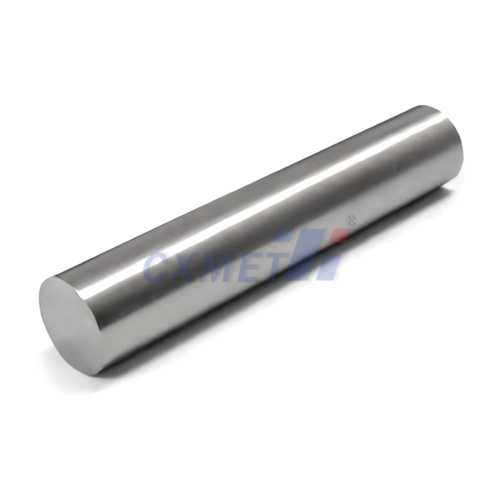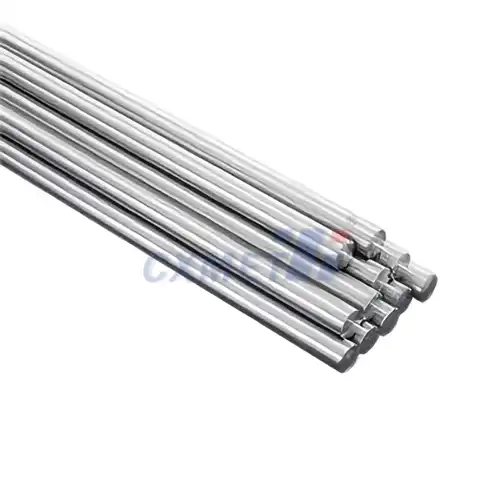- English
- French
- German
- Portuguese
- Spanish
- Russian
- Japanese
- Korean
- Arabic
- Greek
- German
- Turkish
- Italian
- Danish
- Romanian
- Indonesian
- Czech
- Afrikaans
- Swedish
- Polish
- Basque
- Catalan
- Esperanto
- Hindi
- Lao
- Albanian
- Amharic
- Armenian
- Azerbaijani
- Belarusian
- Bengali
- Bosnian
- Bulgarian
- Cebuano
- Chichewa
- Corsican
- Croatian
- Dutch
- Estonian
- Filipino
- Finnish
- Frisian
- Galician
- Georgian
- Gujarati
- Haitian
- Hausa
- Hawaiian
- Hebrew
- Hmong
- Hungarian
- Icelandic
- Igbo
- Javanese
- Kannada
- Kazakh
- Khmer
- Kurdish
- Kyrgyz
- Latin
- Latvian
- Lithuanian
- Luxembou..
- Macedonian
- Malagasy
- Malay
- Malayalam
- Maltese
- Maori
- Marathi
- Mongolian
- Burmese
- Nepali
- Norwegian
- Pashto
- Persian
- Punjabi
- Serbian
- Sesotho
- Sinhala
- Slovak
- Slovenian
- Somali
- Samoan
- Scots Gaelic
- Shona
- Sindhi
- Sundanese
- Swahili
- Tajik
- Tamil
- Telugu
- Thai
- Ukrainian
- Urdu
- Uzbek
- Vietnamese
- Welsh
- Xhosa
- Yiddish
- Yoruba
- Zulu
What is the Difference Between Pure Nickel Sheet and Pure Nickel Strips?
Pure nickel sheets and strips are both forms of this versatile metal, but they differ in their dimensions, manufacturing processes, and typical applications. Pure nickel sheet is generally a flat, rectangular piece of nickel with a larger surface area and uniform thickness. In contrast, pure nickel strips are long, narrow pieces of nickel, often supplied in coils. While both are made of high-purity nickel, their distinct forms make them suitable for different industrial and manufacturing uses. Understanding these differences is crucial for selecting the right nickel product for specific applications.
What are the main applications of pure nickel sheet?
Pure nickel sheet finds extensive use across various industries due to its unique properties, including excellent corrosion resistance, high thermal and electrical conductivity, and magnetic characteristics. In the chemical processing industry, pure nickel sheets are often employed to construct reaction vessels, heat exchangers, and storage tanks. These sheets provide superior resistance to many corrosive chemicals, making them ideal for handling aggressive substances.
In the electronics sector, pure nickel sheets serve as a crucial component in the production of batteries, particularly in nickel-metal hydride (NiMH) and nickel-cadmium (NiCd) batteries. The sheets are used to create electrodes, current collectors, and other internal battery components. Their high electrical conductivity and resistance to corrosion ensure efficient energy storage and long-lasting performance.
The aerospace industry also relies heavily on pure nickel sheets. They are used in the manufacturing of jet engine components, such as turbine blades and combustion chambers. The high-temperature strength and oxidation resistance of nickel make it an excellent choice for these demanding applications. Additionally, nickel sheets are utilized in the production of heat shields and other protective components for spacecraft and satellites.
In the field of electroplating, pure nickel sheets serve as anodes in electroplating baths. The dissolution of these anodes provides the nickel ions necessary for the plating process, ensuring a consistent and high-quality nickel coating on various substrates. This application is particularly important in industries such as automotive manufacturing, where nickel plating is used to enhance the durability and appearance of parts.
The food processing industry also benefits from the use of pure nickel sheets. They are employed in the construction of food processing equipment, such as mixing tanks, evaporators, and pasteurizers. The non-reactive nature of nickel ensures that it doesn't contaminate food products, while its excellent heat transfer properties make it ideal for temperature-controlled processes.
In the energy sector, pure nickel sheets play a crucial role in the development of fuel cells and other alternative energy technologies. They are used in the production of bipolar plates and other components in solid oxide fuel cells (SOFCs) and proton exchange membrane fuel cells (PEMFCs). The high-temperature stability and corrosion resistance of nickel make it an excellent choice for these applications.
How is pure nickel strip manufactured?
The manufacturing process of pure nickel strip involves several steps, each crucial to achieving the desired properties and dimensions. The process begins with the production of high-purity nickel, typically through electrorefining or the carbonyl process. This ensures that the starting material meets the stringent purity requirements for many industrial applications.
The first major step in the production of nickel strip is melting and casting. The pure nickel is melted in a furnace under controlled conditions to prevent contamination. The molten nickel is then cast into ingots or continuous cast slabs, depending on the manufacturing method. These initial forms serve as the basis for further processing.
Next comes the hot rolling process. The nickel ingots or slabs are heated to temperatures typically ranging from 1000°C to 1200°C. At these elevated temperatures, the nickel becomes more malleable, allowing for significant reduction in thickness. The heated nickel is passed through a series of rolling mills, where it is compressed between large rollers. This process not only reduces the thickness but also helps to break down the cast structure, improving the material's overall properties.
Following hot rolling, the nickel undergoes cold rolling. In this step, the material is processed at room temperature or slightly elevated temperatures. Cold rolling further reduces the thickness of the strip and imparts specific mechanical properties, such as increased strength and improved surface finish. The cold rolling process can be repeated multiple times, with intermediate annealing treatments to restore ductility and relieve internal stresses.
Annealing is a critical step in the production of pure nickel strip. It involves heating the material to a specific temperature and then cooling it under controlled conditions. This process helps to relieve internal stresses, soften the material if needed, and achieve the desired grain structure. The annealing parameters can be adjusted to tailor the final properties of the nickel strip to meet specific application requirements.
Surface treatment is often the final step in the manufacturing process. This may include cleaning, polishing, or applying protective coatings. For some applications, the nickel strip may undergo additional processes such as slitting to achieve narrower widths or specific edge conditions.
Quality control is an integral part of the manufacturing process. Throughout production, the nickel strip is subjected to various tests and inspections to ensure it meets the required specifications. These may include dimensional checks, chemical analysis, mechanical property testing, and surface inspections.
The entire manufacturing process is carefully controlled to ensure consistency and quality. Factors such as temperature, rolling force, reduction per pass, and cooling rates are closely monitored and adjusted as needed. This attention to detail results in pure nickel strip with precise dimensions, controlled mechanical properties, and high surface quality.
What factors affect the price of pure nickel sheet?
The price of pure nickel sheet is influenced by a complex interplay of various factors, ranging from global economic conditions to specific industry demands. Understanding these factors is crucial for both producers and consumers of nickel products, as it helps in making informed decisions and managing costs effectively.
One of the primary factors affecting the price of pure nickel sheet is the global supply and demand balance. Nickel is a finite resource, and its availability can fluctuate based on mining output, geopolitical factors, and environmental regulations. When demand outpaces supply, prices tend to rise, and vice versa. Major nickel-producing countries like Indonesia, the Philippines, and Russia can significantly impact global supply through policy changes or production adjustments.
The overall health of the global economy plays a crucial role in determining nickel prices. During periods of economic growth, industries that heavily rely on nickel, such as stainless steel production and battery manufacturing, tend to increase their demand. This increased demand can drive up prices. Conversely, during economic downturns, reduced industrial activity can lead to lower nickel consumption and, consequently, lower prices.
The stainless steel industry, being the largest consumer of nickel, has a substantial impact on nickel sheet prices. Fluctuations in stainless steel production, which can be influenced by factors such as construction activity and automotive production, directly affect nickel demand. As the electric vehicle (EV) industry continues to grow, its increasing demand for nickel in battery production is becoming another significant factor influencing prices.
Exchange rates and currency fluctuations also play a role in nickel pricing. Since nickel is typically traded in US dollars, changes in the dollar's value relative to other currencies can affect its price for international buyers. A stronger dollar can make nickel more expensive for buyers using other currencies, potentially dampening demand and affecting prices.
Production costs are another crucial factor. These include mining costs, energy prices, labor costs, and environmental compliance expenses. As these costs increase, they can put upward pressure on nickel prices as producers seek to maintain profitability. Technological advancements in mining and processing can sometimes help offset rising costs, but their impact is usually gradual.
Speculative activity in the commodities markets can lead to short-term price volatility. Traders and investors may buy or sell nickel futures based on their expectations of future price movements, which can sometimes lead to price fluctuations that are not entirely reflective of the underlying supply-demand fundamentals.
Geopolitical events and trade policies can have sudden and significant impacts on nickel prices. Trade disputes, sanctions, or export restrictions can disrupt supply chains and create uncertainty in the market, leading to price volatility. For example, Indonesia's ban on nickel ore exports in 2020 had a notable impact on global nickel prices.
The growing focus on sustainability and environmental concerns is increasingly affecting nickel prices. As regulations around carbon emissions and sustainable mining practices become stricter, they can impact production costs and supply availability. Additionally, the push for more environmentally friendly nickel production methods may influence pricing in the long term.
Lastly, technological advancements, particularly in battery technology for electric vehicles, can significantly impact nickel demand and, consequently, its price. As battery manufacturers continue to develop new technologies that may require more or less nickel, it can lead to shifts in demand patterns and price trends.
In conclusion, the price of pure nickel sheet is determined by a complex web of interconnected factors. While some of these factors are predictable to a certain extent, others can lead to sudden and significant price movements. For businesses that rely on nickel sheets, staying informed about these various influences and maintaining flexibility in their procurement strategies is crucial for managing costs effectively in this dynamic market.
At SHAANXI CXMET TECHNOLOGY CO., LTD, we take pride in our extensive product range, which caters to diverse customer needs. Our company is equipped with outstanding production and processing capabilities, ensuring the high quality and precision of our products. We are committed to innovation and continuously strive to develop new products, keeping us at the forefront of our industry. With leading technological development capabilities, we are able to adapt and evolve in a rapidly changing market. Furthermore, we offer customized solutions to meet the specific requirements of our clients. If you are interested in our products or wish to learn more about the intricate details of our offerings, please do not hesitate to contact us at sales@cxmet.com. Our team is always ready to assist you.
References:
1. International Nickel Study Group. (2023). World Nickel Statistics.
2. London Metal Exchange. (2024). Nickel Market Data.
3. U.S. Geological Survey. (2024). Mineral Commodity Summaries: Nickel.
4. World Bank. (2023). Commodity Markets Outlook.
5. International Stainless Steel Forum. (2024). Stainless Steel in Figures.
6. Bloomberg New Energy Finance. (2023). Electric Vehicle Outlook.
7. McKinsey & Company. (2024). The Future of Nickel: A Global Perspective.
8. Wood Mackenzie. (2023). Global Nickel Long-term Outlook.
9. S&P Global Platts. (2024). Metals Market Report.
10. Goldman Sachs. (2023). Commodities Research: Nickel Outlook.





